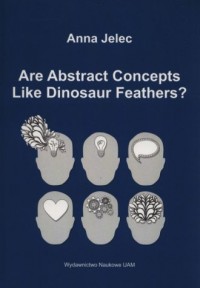Are Abstract Concepts Like Dinosaur Feathers? Conceptual Metaphor Theory and the conceptualisation strategies in gesture of blind and visually impaired children
Anna Jelec

| Dane szczegółowe: | |
| Wydawca: | Wydawnictwo Naukowe UAM |
| Rok wyd.: | 2014 |
| Oprawa: | miękka |
| Ilość stron: | 150 s. |
| Wymiar: | 170x240 mm |
| EAN: | 9788323227694 |
| ISBN: | 978-83-232-2769-4 |
| Data: | 2014-12-29 |
Opis książki:
The human nervous system evolved for the control of complex physical actions. Yet, we are far from understanding the human capacity for complex abstract thought. One theory suggests that both abstract and concrete thinking is based on a single perceptual mechanism grounded in physical experience. Asking the question posed by psychologist Daniel Casasanto whether "abstract concepts are like dinosaur feathers" we investigate the evolutionary processes that allowed humans to deal with abstract phenomena by putting them in concrete terms. After all, we frequently resort to analogies, similes or metaphors when describing the intangible. We may say "put that into words" as if words were containers into which thought can be stored. Conceptual Metaphor Theory goes a step further by saying that not only do we speak about abstract concepts in physical terms, but we think about them in this manner as well. However, the theory itself has been vigorously criticised because its principal theses are considered impossible to falsify. The author of this book proposes a new perspective on the conceptual role of metaphors. Filled with theoretical analyses and empirical research on the speech and gesture of seeing, blind and visually impaired children, this book demonstrates that the basis for abstract thought may well lie in physical experience.
Książka "Are Abstract Concepts Like Dinosaur Feathers? Conceptual Metaphor Theory and the conceptualisation strategies in gesture of blind and visually impaired children" - Anna Jelec - oprawa miękka - Wydawnictwo Naukowe UAM. Książka posiada 150 stron i została wydana w 2014 r.

